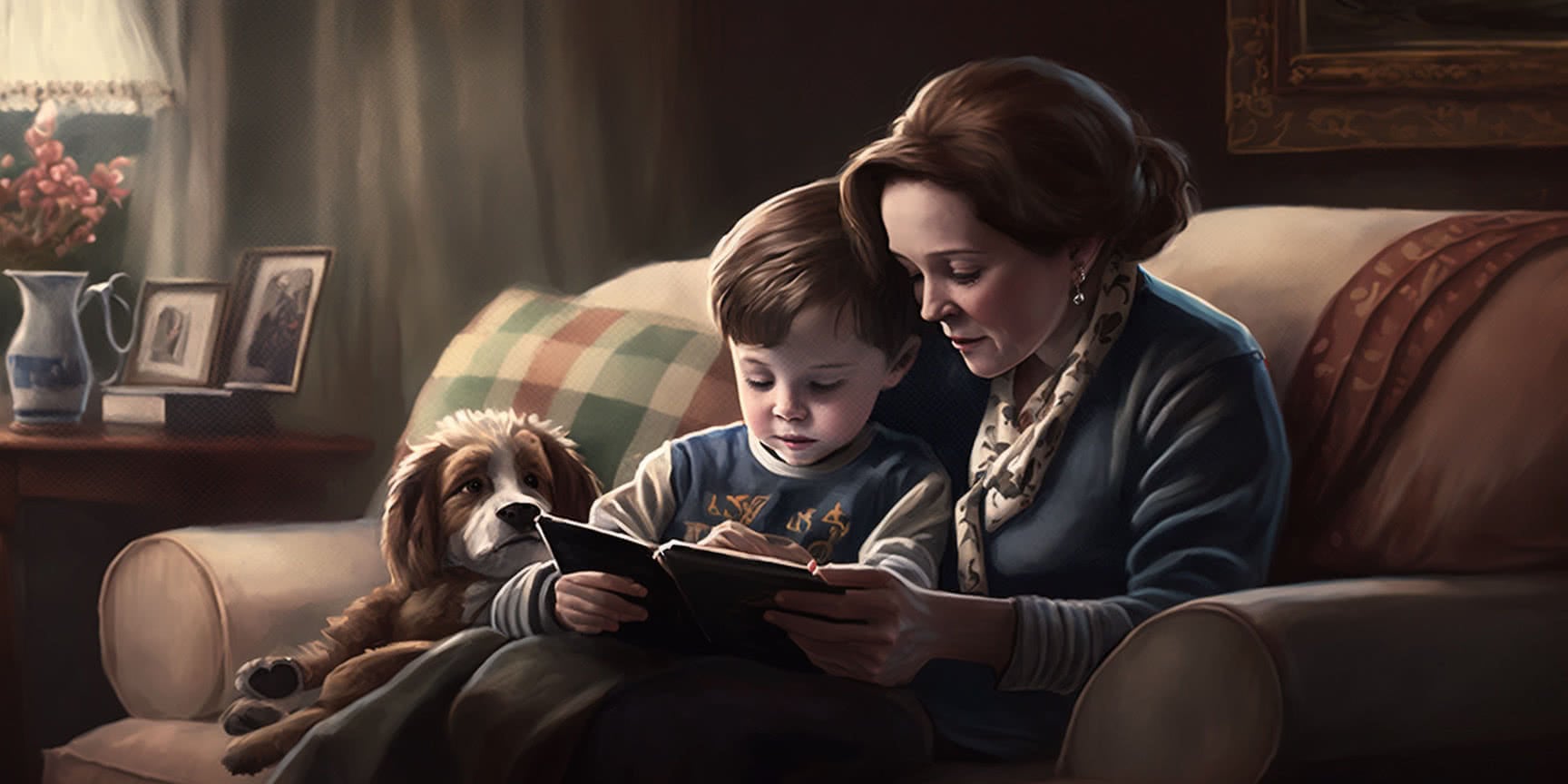

Being Involved in Your Child’s Education (In the Right Way)
It’s been an interesting year by a lot of measures, and that includes your child’s education. Many parents and students were thrown the deep end with the education system this year without there being much of a framework with how to cope. Whether you decided to home school until this is all over or you are having to play a more significant role with at-home tasks, this post is for you.
How many times have you tried to look at a task sheet and had no idea what was going on? Asking your child can be tricky. Plenty of kids understand something very well in the classroom but don’t retain enough of an understanding of the task for when they are at home. They may have also understood it incorrectly. The best thing is to head to an objective source.
If your child doesn’t have a teacher that is active online, it can be really intimidating. Much of the jargon on the rubric sheets can feel impenetrable. You might end up reading just for the gist and filling in the gaps, whether you realise it or not. This could not only compromise the grade that your child might get for that particular task but also the way that they try to apply that concept in class.
However, there is a simple way to start breaking down these tasks piece by piece, and it’s all free! c explains each aspect of what your child is learning in detail and provides extra resources so that you can give your child context for what they are doing. Try to stick to the jargon that teachers are using in class with the kids. This will be a smooth and consistent approach that helps these tough ideas eventually click.
Instead of doing their school task with them, do a similar one together. This will cement in the process so that they can complete their own task more independently. While you are doing the preparation task, you will be helping to provide your little learner with a framework for what to do. You can even write it down step by step as you go on a separate piece of paper so they can follow those steps when they do their independent task.
To start getting orientated with the resources at your disposal, head to the F-10 curriculum website. Here you will find that you can search through the F-10 curriculum by Learning Areas, General Capabilities and Cross-curriculum Priorities. In this article, we are going to be focusing on English Learning Areas.
Once you have gotten to this point, you will see an online form like this:

If you are looking for something specific, you can specify which Strands, General Capabilities, Cross Curriculum Priorities or Additional Information you want to search by. For now, let’s leave them all as they are. For the purposes of this post I am going to be exploring at a Year 2 level. Follow along with me so that you can get an introduction to the website, then tailor your searches to your needs when we are done. Tick Year 2 and press the submit button.
You will now be presented with this screen, where you can explore more in the areas of Language, Literature and Literacy.
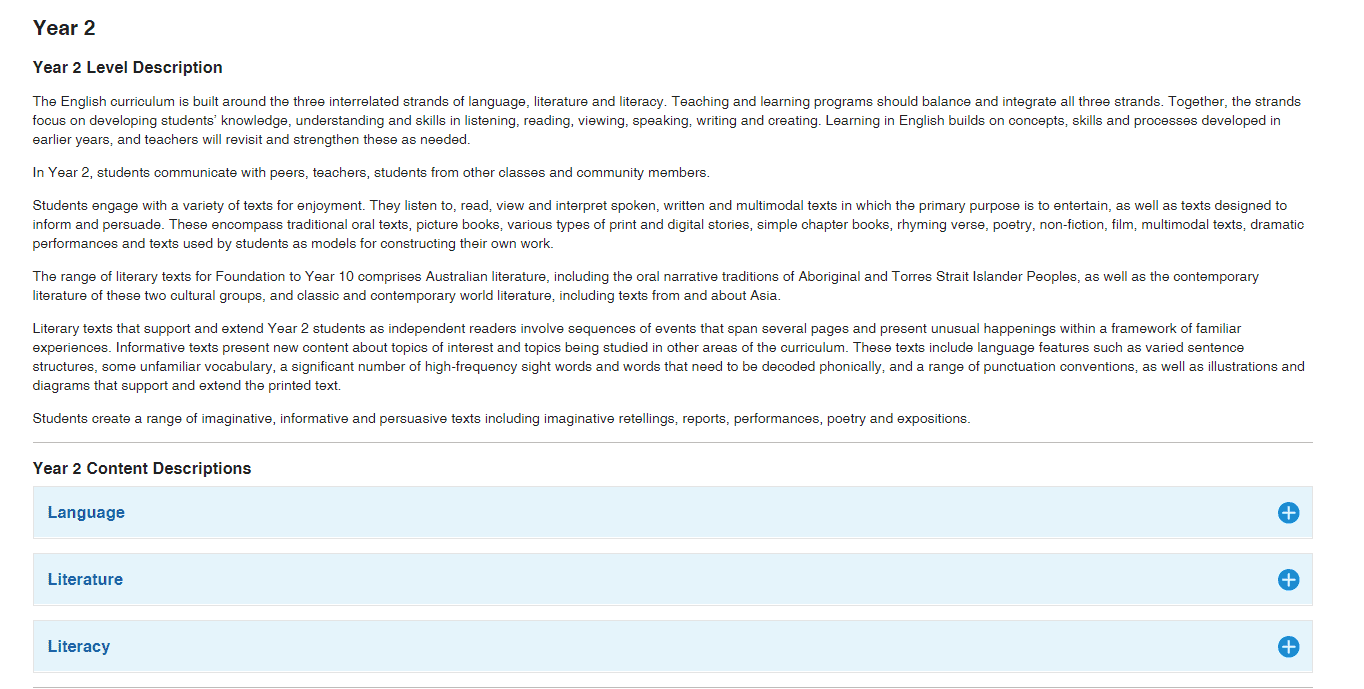
Let’s expand the Literacy section. Now we have four areas to consider. At the beginning of a school year, it is a great idea to have a read over these so that you know what is ahead. You can also start having some simple discussions with your child about the sorts of tasks that they might be doing.
We can now choose between the sections Texts in Context, Interacting With Others, Interpreting, Analysing, Evaluating and Creating Texts. Let’s pretend that your child has been sent home with a creative writing task. We want to read more about the Creating Texts section.

Under each of the four elements in this area, you will see that there are symbols. For example, the following symbols under the first element stand for Literacy, Critical and Creative Thinking and Writing. Some of these link to other pages that can give you further information.

Now click on Elaborations next to this first element about creating short, imaginative texts.

We can see that these texts are going to be taught and assessed according to planning, sequencing, sentence structure and vocabulary. You can talk to your child about what each of those parts mean. I also highly recommend reading through the work at the end with just one task in mind. For example, you might read through it together and just think about sequencing in the piece. Then you might read through again and just think about vocabulary. Teaching your child at an early age to compartmentalize their editing is a valuable skill.
Now that we have had a look at the elaborated skills, let’s head back up to the element itself. You will see at the end of the element that it has a link to ACELY1671 – Scootie. Click on that link.
You will now be taken to a companion website where you can explore available resources for working on this skill. If your child is having trouble with planning their piece, you will be able to find ways to approach the task in a new way.
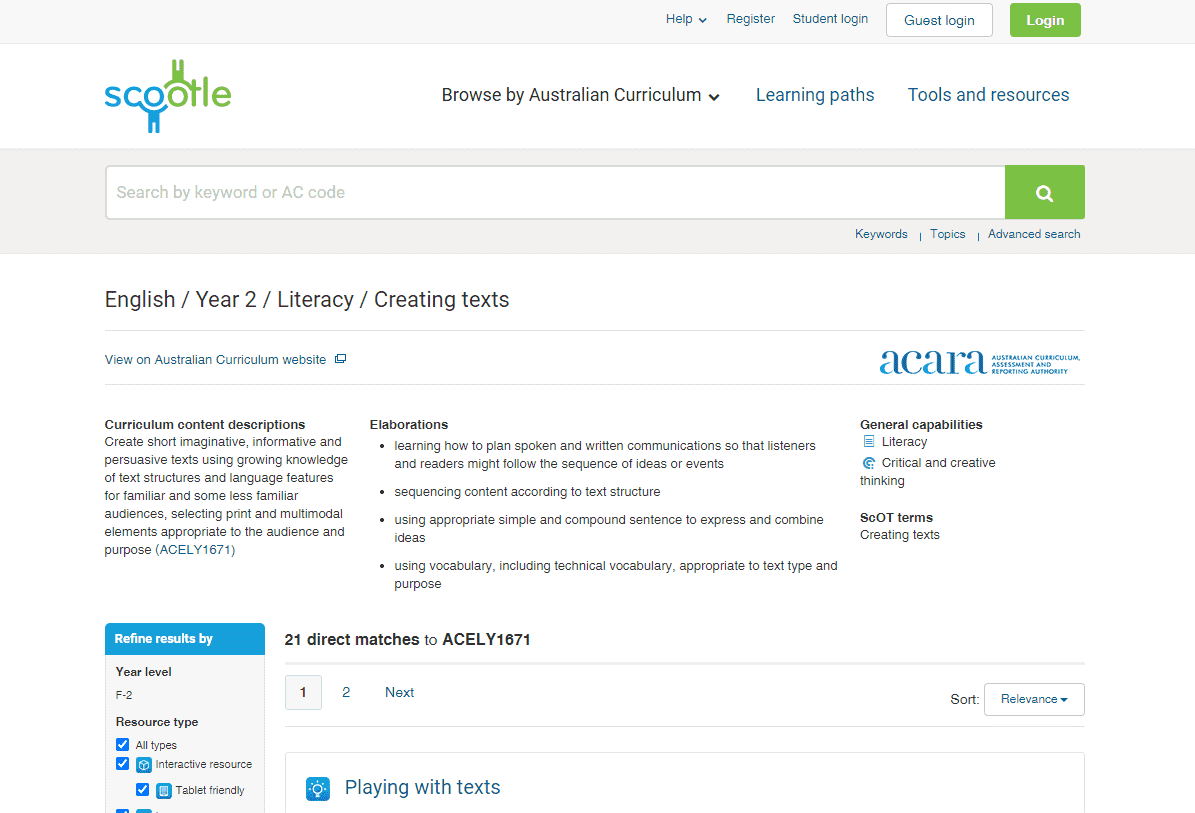
Now that you are at the site, I want you to log in as a Guest User up the top. This will prompt you to enter the code that you want resources for. Copy and paste ACELY1671. Now you will have access to the resources for this Scootie code. Click on the Playing with Texts entry. This takes you to an ABC education website. Click on the picture of the children reading where it says ‘View’.
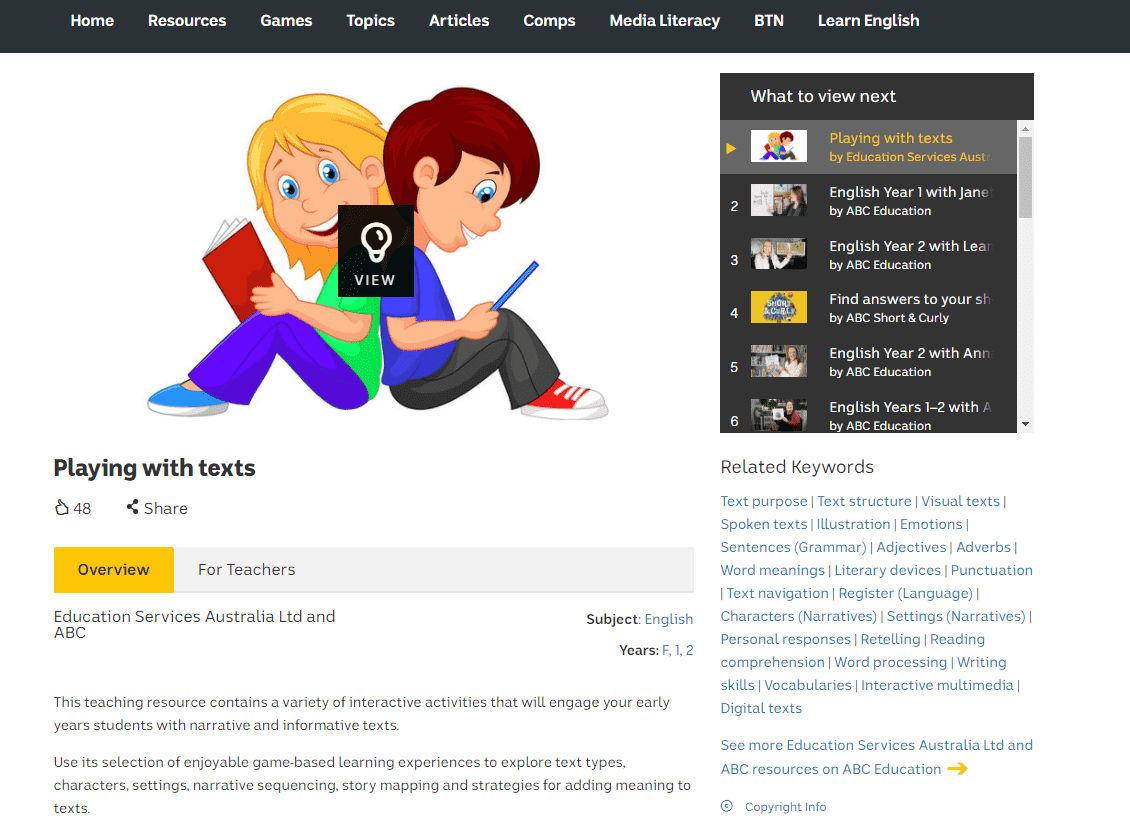
We are going to do the Talking Dinosaur activity under Topic 1: Designing characters and settings.
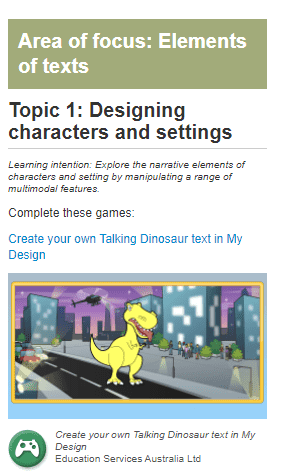
Follow the links or go directly to this website

Press the start button and have a play around with the tool. You can choose the temperament, size, location, colour, voice, setting and text that the dinosaur has. You might find that your child just wants to make one and use this idea or that they end up playing around with a couple of different options.
They may not even end up using this idea at all. Maybe through playing with the different temperaments they decide that they like the idea of writing about an alarmed cat or sleepy puppy. Maybe the settings give them an idea for a story that they want to tell in a city. This is all great for developing their sense of creativity. If they bounce around different ideas and come up with something more personal to them, then the tool has done its work!
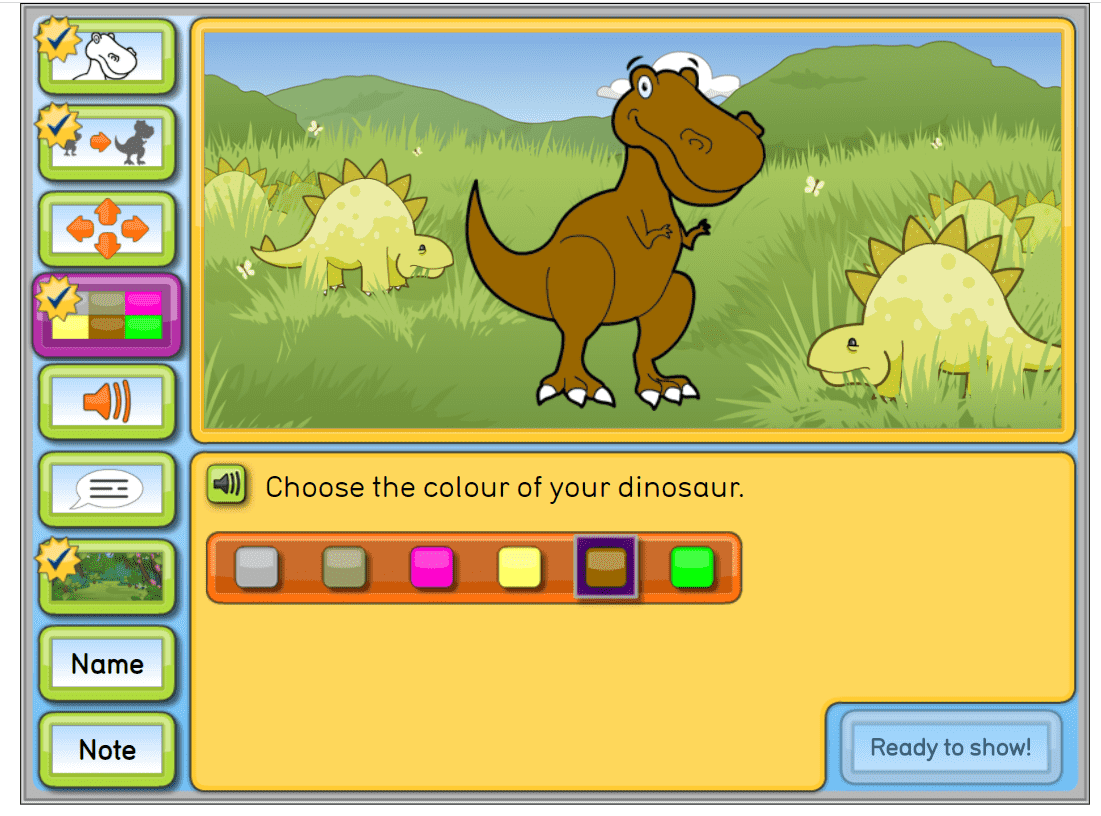
There are a lot of different videos, tools and songs that you can explore with your child. The Australian Curriculum and Scootie websites work so well together. You can break down tasks so that they make more sense and explore a host of different resources with your child. I encourage you to have a broad look at the different areas that they are studying at the moment and then pick a few online exercises that you can start using together.
If you found this article helpful, be sure to stay posted. I am going to do a deeper dive on some assignment examples in the future to show how you can help your child with their reading and writing tasks.

